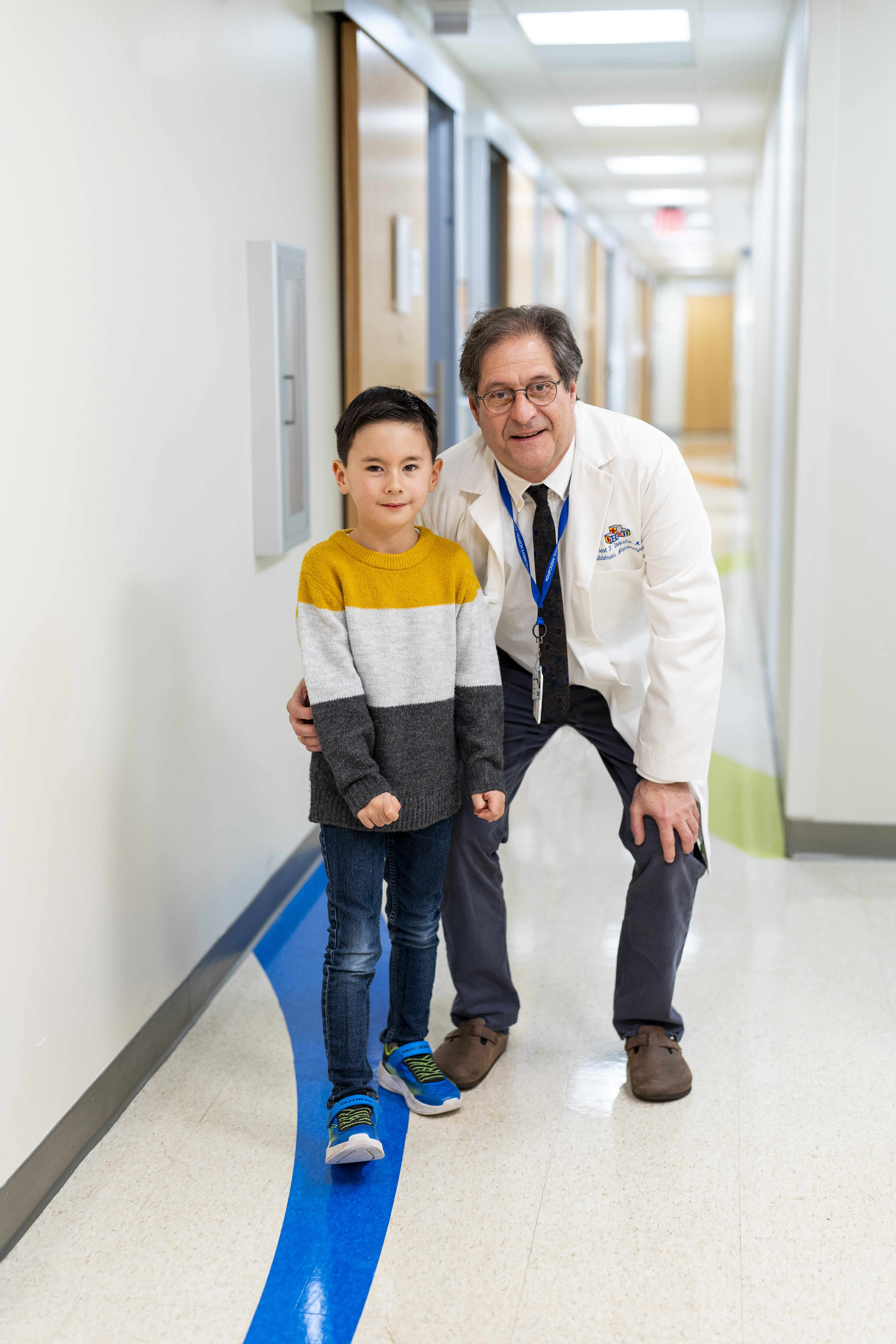
Logan’s procedure to correct rare condition makes medical history
From the moment he was born, Logan Branson struggled to eat despite a healthy appetite. His mom tried breastfeeding, but he couldn’t latch well. After switching to a bottle, Logan still had difficulty drinking and gaining weight.
When he started eating solid foods, not a day went by without Logan choking. His parents, Hiroko and Jason Branson, quickly became adept at administering first aid – back blows, or thumps on the middle of the back – to clear his airway. The daily challenge to stop Logan from choking became a terrifying norm. “We had to do back blows on him so many times that we didn’t strap him in his highchair to eat,” Jason says.
As Logan grew older, more issues surfaced. While he was bright and fluent in both Japanese and English, his speech was very hard to understand. By the time he was in kindergarten, his parents wrestled with a recommendation from his speech therapist to give Logan a tablet to carry around so it could speak for him.
In search of answers, Hiroko and Jason took Logan to Dr. Cristina Baldassari, an ear, nose, and throat specialist at CHKD. They wondered if it was possible that Logan had tongue-tie, a condition that restricts the tongue’s range of motion. Dr. Baldassari suspected something more complex, perhaps with the hypoglossal nerve which controls the tongue, and ordered an MRI to rule out any issues with the nerve.
The MRI revealed a rare diagnosis: a blood vessel was pressing on Logan’s hypoglossal nerve, a condition known as microvascular compression. As a result, Logan couldn’t move his tongue to the right side of his mouth.
After reviewing the MRI, Dr. Dilustro, a neurosurgeon at CHKD, examined Logan. His opinion was that the MRI clearly showed a vessel was pressing on the nerve. While this condition can affect many cranial nerves, it is extremely rare for it to involve the hypoglossal nerve. Dr. Dilustro found less than 20 reported cases in medical literature, the youngest patient being 17 years old.
The Bransons couldn’t believe the news. “A billion things were going through our brains,” Jason says. “But it made sense. It was the final dot that connected everything.”
Deciding to treat Logan was a daunting decision. A successful surgery could change his life, but the risks of any neurosurgical procedure are significant. At 5 years old, Logan would be the youngest patient to undergo this complicated procedure. After a lengthy discussion with Dr. Dilustro, the couple agreed to move forward with the surgery. “We were still pretty nervous about it, but we thought it was the best route,” Jason says. “We trusted Dr. Dilustro,” Hiroko adds.
For the surgery, Dr. Dilustro teamed up with Dr. Stephanie Moody Antonio, an otolaryngologist (also known as an ear, nose, and throat surgeon) at CHKD who specializes in neurotology, a branch of otolaryngology that focuses on medical and surgical problems of the ear and related cranial nerves.
In the operating room, Dr. Moody created a small hole in Logan’s skull just behind his right ear. From this opening, using a microscope with 30-times magnification, Dr. Dilustro carefully made his way to the hypoglossal nerve. This process of isolating the nerve without damaging surrounding structures required meticulous dissection. “It took hours to travel centimeters,” he says.
Once they located the nerve, the surgeons discovered that the blood vessel was significantly covering it and compromising its function. With great care, Dr. Dilustro created enough space to insert a small piece of Teflon between the nerve and the blood vessel to relieve the pressure on the nerve. Dr. Moody positioned it perfectly on her first attempt. “She got it exactly where it needed to go,” Dr. Dilustro says.
In a waiting room nearby, Logan’s parents received text message updates on their son’s progress throughout the surgery. CHKD social workers and chaplains checked in with them repeatedly to provide support during their agonizing wait.
When it was over, the couple reunited with Logan in the Pediatric Intensive Care Unit. The first sign of success came the very next day: Logan’s tongue showed noticeable improvement. “That was a wow moment,” Dr. Moody says. “The surgery is really going to make a difference for him.”
Today, Logan is thriving. His speech has improved, and he no longer has any challenges eating. And best of all: he won’t need a tablet to communicate for him.
The Bransons say they’re grateful for all the care Logan received. “I’m so glad we have CHKD,” Hiroko says.
Published in CHKD's KidStuff Magazine, Summer 2025
Written by Alice Warchol • Photography by Ken Mountain

